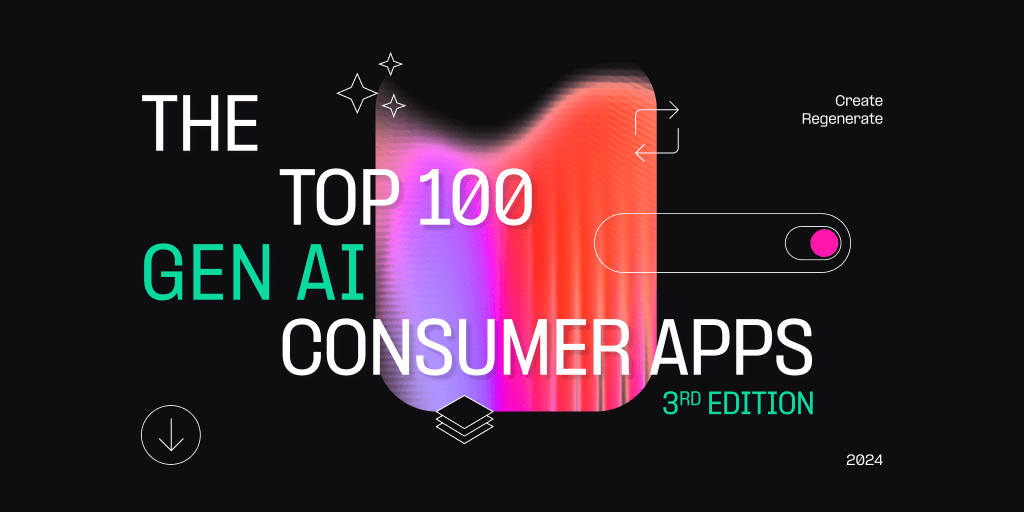Exploring the Thriving Landscape of Generative AI Consumer Apps
Navigating the rapidly evolving universe of generative AI products is no small feat. As we continuously develop new workflows, explore practical applications, and experiment with creative tools, the question arises: which generative AI applications are actually capturing the attention of users? Are certain behaviors and categories rising in popularity, and which apps have people returning to versus those they merely try out?
Welcome to the latest edition of the Top 100 Generative AI Consumer Apps, where we dive into the data and rank the top 50 AI-focused web products (by unique monthly visits) and the top 50 mobile apps (by monthly active users). This time, nearly 30% of the listed companies are newcomers compared to our previous report in March 2024.
Key Trends and Insights
Beyond the impressive array of logos in these rankings, the data sheds light on exciting trends within emerging categories, new competitors, and user engagement patterns.
1. The Allure of Creative Tools
A staggering 52% of the companies in our web ranking focus on content generation and editing across various formats like image, video, and music. Among the 12 new entrants, 58% belong to the creative tool segment, indicating a thriving market. Notable first-time listmakers include Luma (#14), Viggle (#21), SeaArt (#29), and Udio (#33). The biggest jump in rankings was made by the music generator Suno, which soared from #36 to #5.
Historically, image generation tools dominated this space, but we’ve seen a shift – image-only tools now comprise just 41% of the top content generators. Fresh faces in video (Luma, Viggle, and Vidnoz) and music (Udio) are shining, underlining significant advancements in output quality.

2. Mobile Editing and Legacy Transformations
On mobile, content editing for images and videos emerges as a key focus, making up 22% of the rankings. Enthusiasm for editing on mobile devices is evident, with several legacy creative tools evolving to embrace generative AI principles. For instance, Meitu (#9), SNOW (#30), and Adobe Express (#35) have made significant strides by pivoting away from traditional methods.

3. ChatGPT Remains Unchallenged, But Competition Grows
For the third consecutive edition, ChatGPT holds the top spot among both web and mobile applications, but competition is rapidly intensifying. Emerging contenders are stepping into the fray. Perplexity has jumped to #3 in the web rankings, emphasizing concise, real-time answers while keeping users engaged with lengthy visits averaging over seven minutes. Anthropic’s Claude has climbed its way into the top five, further complicating the landscape for AI-based assistants.
4. Bytedance’s Expanding Portfolio
Bytedance, the parent company of TikTok, is making waves in web-based AI products with three new entries: the education platform Gauth (#44), bot builder Coze (#45), and general assistant Doubao (#47). Doubao earned its place on both the web and mobile lists, highlighting Bytedance’s strategic focus on generative AI applications as part of their R&D endeavors.

5. Novel Categories Emerge
Among our rankings, a new category called "aesthetics and dating" has surfaced, featuring tools like LooksMax AI (#43) and Umax (#44) which help users enhance their attractiveness through image analysis and appearance suggestions. These apps have quickly gained traction, with LooksMax boasting over 2 million users.
Conclusion
As generative AI apps continue to reshape the digital landscape, new entrants emerge with innovative solutions that pull users in. The engagement patterns reflect an enthusiastic user base eager to adopt the next big thing in AI. The question now is, where will all these advancements take us?
The AI Buzz Hub team is excited to see where these breakthroughs take us. Want to stay in the loop on all things AI? Subscribe to our newsletter or share this article with your fellow enthusiasts.




